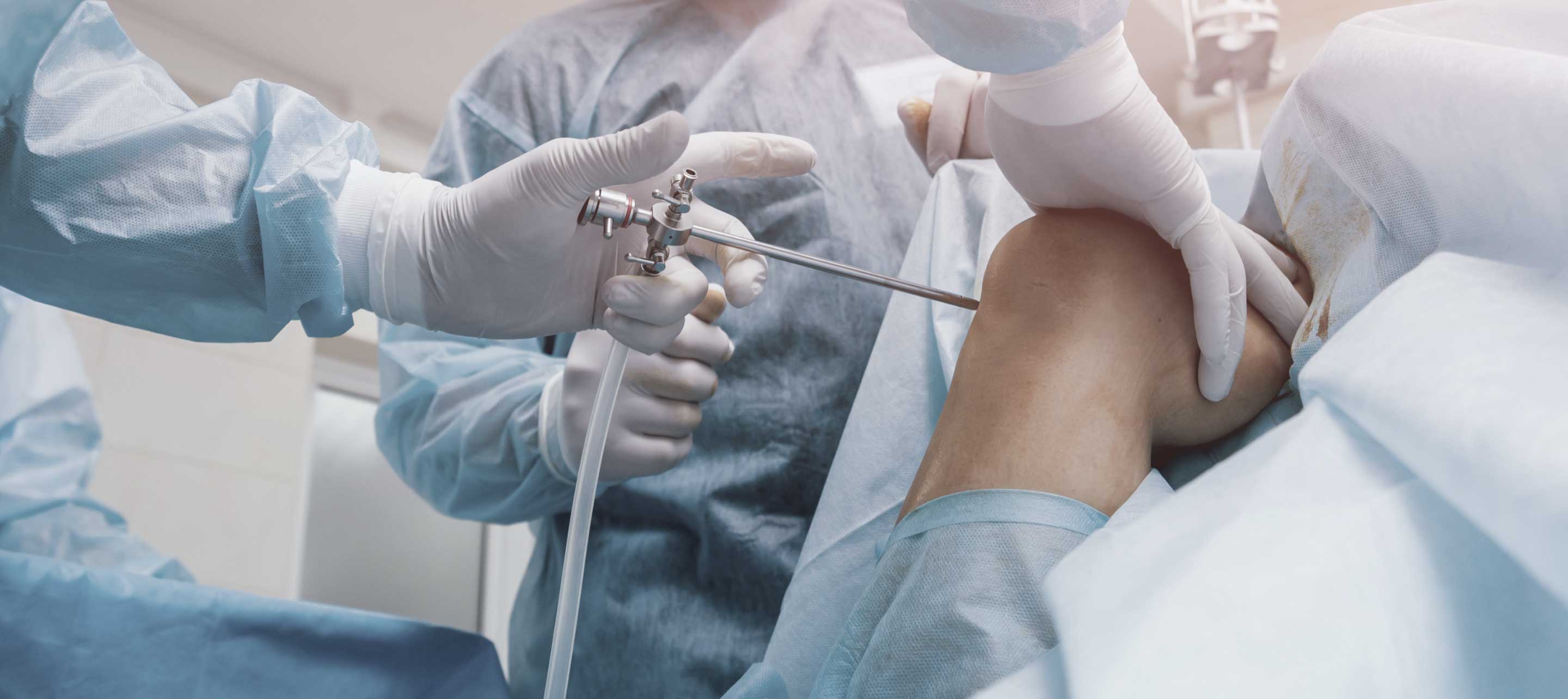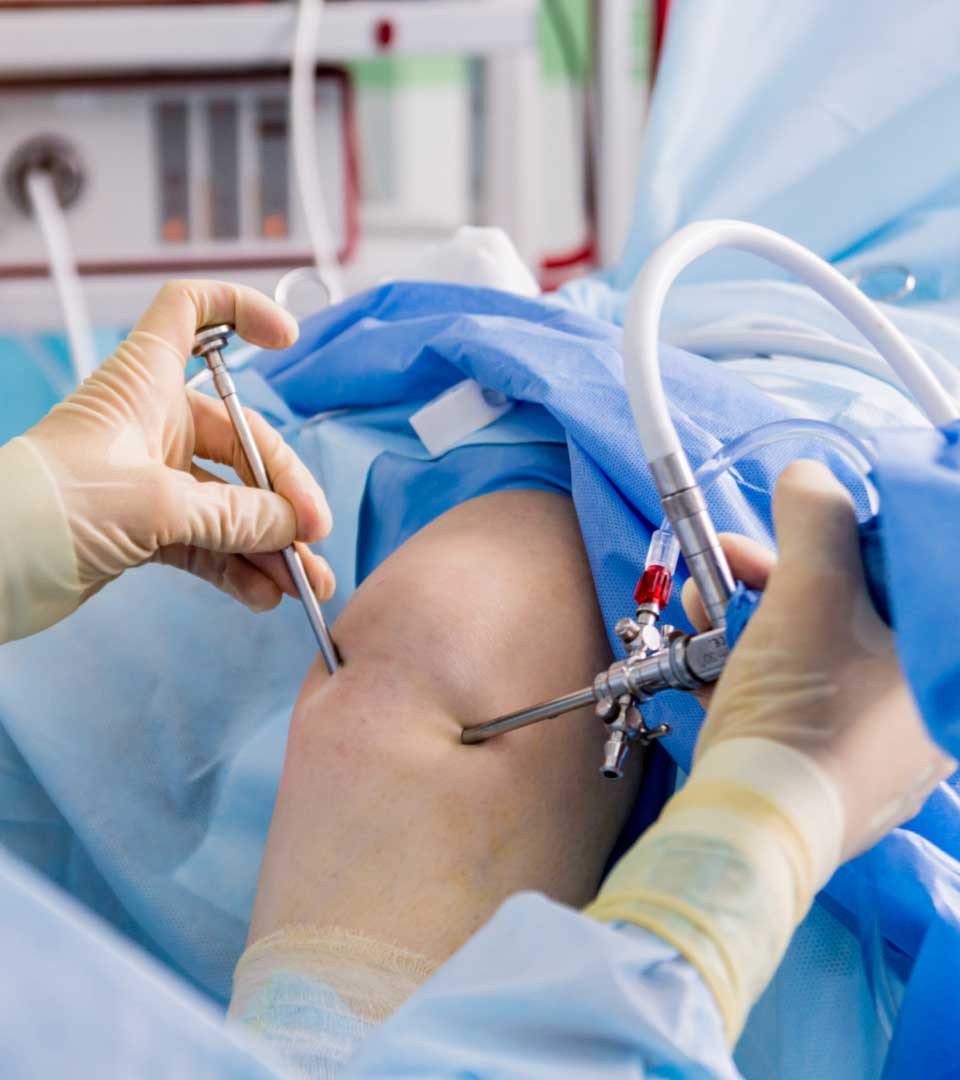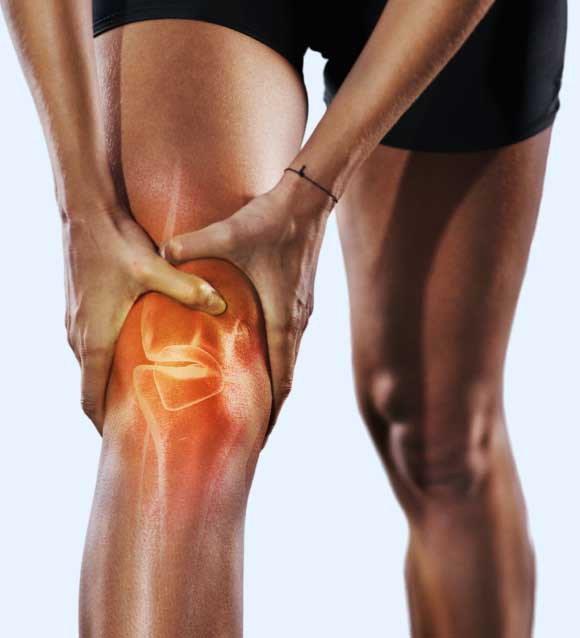
 Sports Injuries
Sports InjuriesSports and exercise are vital for overall health, but often enhance the risk of sports injuries. With rest and other techniques, numerous minor sports injuries can be treated at home. However, if the pain, swelling, bruising, or immobility of the injured joint persists for hours or days, then you might require medical treatment for it.
Over the past three decades, arthroscopy has evolved into a highly defined and standardized procedure in the field of orthopedics, yielding excellent outcomes in the treatment of various sports injuries, particularly associated with those affecting the knee and shoulder joints. After arthroscopy showed promising results in these areas, its application was expanded to include the treatment of other joints also, including the elbow, hip, wrist, ankle, and wrist.
In recent years, the evolution of arthroscopy has paved the path for new surgical tools, new surgical methods, and new diagnostic information, leading to better outcomes of surgeries. The diagnostic insight acquired, specifically via arthroscopy, has been instrumental in the identification and management of various sports injuries. It has backed many diagnostic strategies that form the basis of various successful medical treatments for sports injuries. A decreased risk of infection, scarring, pain, and swelling after surgery are some of the positive aspects of arthroscopy. It also enables a quicker return to sports. Complications could still occur, though, due to the high technical demands of the procedure. The results of the arthroscopy are influenced by the experience, expertise, competence, and technique of the surgeon.
If you or your loved ones have suffered sports injuries, then you are at the right place. Dr. Ishwar Bohra is one of the top orthopedic surgeons in India. He has earned great merits and has been recognised as one of the best doctors for arthroscopy for sports injuries in India. People are experiencing best outcomes from the surgeries performed by Dr. Bohra.
Schedule a call
Get accurate insights for your joint issues and the best personalized treatment plan for it. We believe in restoration of your joint functions maximally, taking care of your unique needs.
Contact Us
 Sports Injuries
Sports InjuriesSports injuries tend to happen because of overuse, collisions, or application of more force than a body part is structurally capable of withstanding. Sports injuries can be categorized into acute and chronic. An injury that occurs suddenly, such as a sprained ankle caused by an awkward landing, is known as an acute injury.
Acute injuries are those that happen suddenly, like a sprained ankle from an awkward landing. Regular excessive use of joints or muscle groups can result in chronic injuries. Chronic injury progression can also be influenced by improper technique and structural abnormalities. You might be hurt more badly than you realize when it comes to sports injuries, so it's crucial to have a right and timely medical investigation done. For example, a bone fracture could be the cause of your injury but may appear as an ankle sprain visually.
Following are the most common types of sports injuries:
A sudden force applied to a bone can result in a fractured bone, also known as a broken bone.
A bump or blow to the head can result in a concussion, which is a brain injury.
A dislocation happens when a bone's end shifts within a joint relative to its original position. For example, shifting the shoulder head out of its socket is called shoulder dislocation.
Certain bones have cartilage covering and protecting their ends. Cartilage is a strong but flexible shock absorber. Cartilage injuries commonly affect knee and shoulder joints.
Inflammation of tendons (the tissues that join your muscles to your bones) is called tendinitis. Over time, it develops due to repetitive motions. For example, patellar tendonitis, or jumper's knee.
When a muscle is overextended and stretches or tears, this is known as a strain. Back, abdominal, and hamstring strains are common examples.
A sprain results from excessive ligament stretching or tearing. Ligaments stabilize joints and connect bones. These injuries commonly occur in the ankle, knee, and wrist that can range in severity.
The advantages of arthroscopy for treating sports injuries in athletes lies in its minimally invasive outcomes. It facilitates faster healing and significantly shortens recovery time because it only requires a few small incisions. The fact that arthroscopy localizes the surgical procedure to the affected area while sparing the surrounding tissues is another important factor that makes it perfect for athletes. Unfortunately, in addition to the structures being operated on, many nearby structures are also impacted by open surgery. It also leads to lesser scarring. Last but not least, arthroscopic surgery is a lot less stressful than open surgery.


Generally, arthroscopic surgery is a quick procedure requiring roughly an hour. Following that, you'll be brought to a separate space for rest and recover from the effect of anesthesia for a few hours before leaving for your home.
The post-procedural care involves:
You should be able to resume light activities and desk work in a couple of days. In one to three weeks, you should be able to drive again, and a few weeks after that, you should be able to perform harder activities.
Your physiotherapist might offer you tips and exercises to aid in your post-operative recovery. A few weeks may pass before returning to your regular activities. You should be able to get back to your regular activities as soon as possible with regular exercise. Consult your doctor or the healthcare team for advice prior to beginning an exercise regimen.
The majority of patients experience significant improvement, but pain and movement take time to decrease. These symptoms vanish over time. But each person's road to recovery is unique. A longer period of rehabilitation and recovery might be required in certain circumstances.
Renowned for his groundbreaking work in joint restoration and management of sports injuries, Dr. Ishwar Bohra keeps pushing the frontiers of innovation with his latest research backed procedures. By employing advanced techniques and evidence-based strategies, Dr. Bohra ensures the best possible results for patients seeking orthopedic rejuvenation. His commitment to excellence in restoring mobility and improving quality of life is demonstrated by his commitment to staying at the forefront of medical advancements.
A: For a wide range of sports injuries associated with knee, foot, ankle, shoulder, elbow, and hip, arthroscopic surgery offers thorough evaluation and treatment with better outcomes than open surgery.
A: The success rate of this highly advanced procedure is over 90%. Arthroscopy repairs tissues with specialized instruments and smaller incisions.
A: It is a widely accepted fact that knee arthroscopy is a safe procedure. However, there are also known to be very rare but significant side effects, including pulmonary embolism, deep vein thrombosis, and joint infection.
A: It might take you six weeks to recover from it completely , depending upon the extent of surgery. You will need more time to recover if your doctor has repaired a damaged tissue.
A: Since it's a minor procedure, you can return home the same day because it's performed as an outpatient.
Dr. Ishwar Bohra, the best joint replacement surgeon, has brought joint care a step closer to the maximum mobility restoration with enhanced quality of life and great patient satisfaction. Choose our facility to avail personalized care and highest treatment success since we are committed to serve you the most personalized care.
Dr. Ishwar Bohra’s unparalleled expertise backed by 25,000+ successful surgeries, testifies his capabilities to provide the best joint care. His compassionate patient care approach is highly appreciated by his patients.
Dr. Bohra, a highly skilled doctor, is well-introduced to modern therapeutic interventions and latest equipment to provide most accurate, minimally invasive, and highly successful results.
We are committed to provide you the joint care solutions most suitable for you, keeping your expectations and convenience at the forefront. Such tailored solutions will fulfill the unique needs of each patient maximally.